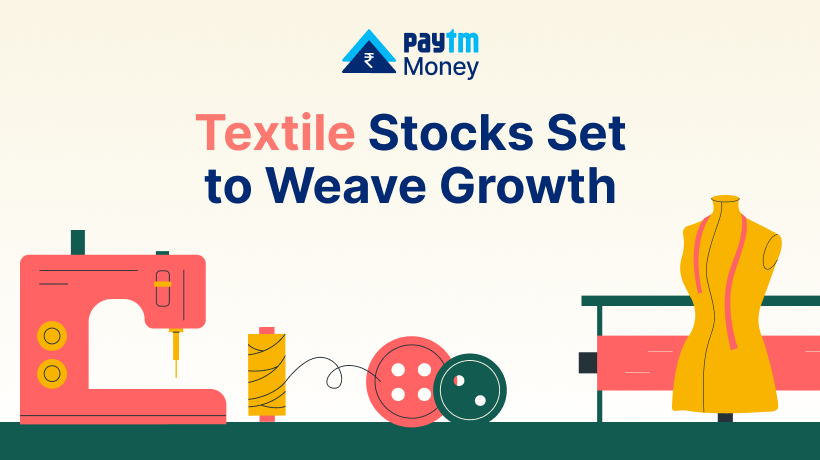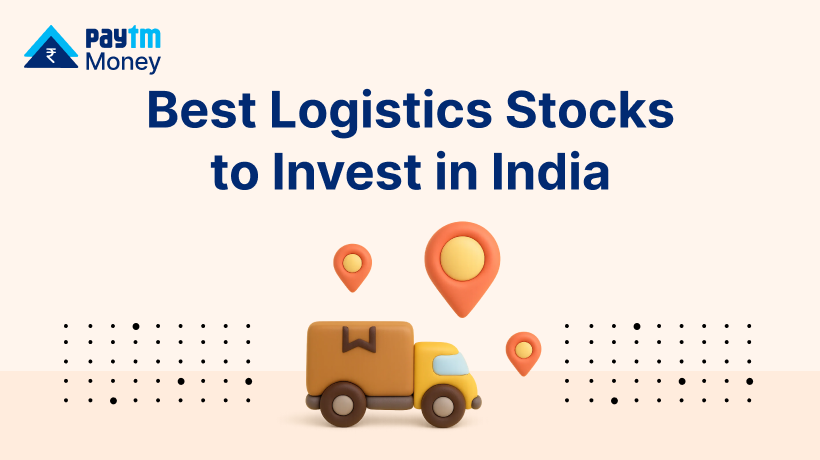Introduction
The textile industry in India is one of the oldest and most significant contributors to the country’s economy. With a rich history of craftsmanship and a robust demand for textile products, India stands as a global leader in textile production and export. As the industry evolves with advancements in technology and shifting consumer preferences, investing in the best textile stocks could offer lucrative opportunities in 2025. This blog explores some of the top textile stocks in India, their market positions, and future prospects.
- Introduction
- Why Invest in Textile Stocks?
- 1. Growing Domestic and International Demand
- 2. Government Support
- 3. Innovation and Sustainability
- Best Textile Stocks in India 2025
- 1. Vardhman Textiles Limited
- 2. Arvind Limited
- 3. Welspun India Limited
- 4. Raymond Limited
- 5. KPR Mill Limited
- 6. Trident Limited
- 7. Rupa & Company Limited
- 8. Nahar Spinning Mills Limited
- 9. Indo Count Industries Limited
- 10. Sutlej Textiles and Industries Limited
- Key Metrics to Evaluate Textile Stocks
- 1. Revenue Growth
- 2. Profit Margins
- 3. Debt Levels
- 4. Export and Domestic Market Balance
- Risks Associated with Textile Stocks
- Conclusion
- Frequently Asked Questions (FAQs)
Why Invest in Textile Stocks?
1. Growing Domestic and International Demand
India’s textile sector is witnessing a surge in demand, both domestically and internationally. The rise in disposable income, changing fashion trends, and increased global demand for sustainable and high-quality textiles are key drivers.
2. Government Support
The Indian government has launched several initiatives to boost the textile industry, including the Production Linked Incentive (PLI) scheme, aiming to enhance manufacturing capabilities and attract investments.
3. Innovation and Sustainability
Textile companies are increasingly focusing on innovation and sustainable practices, catering to the growing demand for eco-friendly products. This shift not only aligns with global trends but also opens up new market opportunities.
Best Textile Stocks in India 2025
1. Vardhman Textiles Limited
Vardhman Textiles is a leading player in the Indian textile sector, known for its high-quality yarns and fabrics.
1. Market Capitalization: ₹133 billion
2. Growth Strategy: Expansion of capacity and focus on value-added products to cater to diverse market needs.
3. Future Prospects: Continued growth in export markets and increased penetration in the domestic market.
2. Arvind Limited
Arvind Limited is one of India’s largest textile companies, with a diverse portfolio spanning fabrics, garments, and advanced materials.
1. Market Capitalization: ₹85 billion
2. Innovation: Strong focus on innovation and sustainability, introducing eco-friendly fabrics.
3. Market Position: A well-established global presence and a robust supply chain.
3. Welspun India Limited
Welspun India is a leader in home textiles, supplying products to major global retailers.
1. Market Capitalization: ₹129 billion
2. Strategic Focus: Expanding product lines and strengthening distribution networks.
3. Competitive Edge: Strong relationships with international clients and a focus on innovation.
4. Raymond Limited
Raymond is a household name in India, known for its premium suiting fabrics and garments.
1. Market Capitalization: ₹46 billion
2. Brand Strength: A trusted brand with a strong retail network.
3. Future Growth: Diversification into new product categories and expansion of retail footprint.
5. KPR Mill Limited
KPR Mill is a vertically integrated textile company, engaged in manufacturing yarn, knitted fabric, and garments.
1. Market Capitalization: ₹393 billion
2. Operational Efficiency: Emphasis on efficiency and cost control to maintain competitiveness.
3. Expansion Plans: Plans to increase capacity in the garments segment to meet rising demand.
6. Trident Limited
Trident Limited is a major player in the textile and paper sectors, known for its towels, bed linen, and yarns.
1. Market Capitalization: ₹158 billion
2. Growth Strategy: Focus on increasing production capacity and strengthening brand presence.
3. Innovation: Investment in technology to enhance product quality and sustainability.
7. Rupa & Company Limited
Rupa & Company is a leading innerwear brand in India, catering to a broad demographic with various product lines.
1. Market Capitalization: ₹17 billion
2. Market Penetration: Strong presence in both urban and rural markets.
3. Future Outlook: Plans to expand product offerings and strengthen online sales channels.
8. Nahar Spinning Mills Limited
Spinning Mills is a significant player in the spinning segment, supplying high-quality yarns to the textile industry.
1. Market Capitalization: ₹10 billion
2. Market Reach: Extensive domestic and international market presence.
3. Strategic Initiatives: Focus on increasing efficiency and expanding production capacity.
9. Indo Count Industries Limited
Indo Count specializes in the manufacturing of home textile products, particularly bed linen.
1. Market Capitalization: ₹60 billion
2. Export Dominance: A major exporter with a strong presence in the U.S. and European markets.
3. Growth Plans: Strengthening design capabilities and expanding product range.
10. Sutlej Textiles and Industries Limited
Sutlej Textiles is a leading manufacturer of value-added dyed yarns and home textiles.
1. Market Capitalization: ₹7 billion
2. Focus Areas: Diversification into new product lines and expansion in export markets.
3. Market Strength: Known for high-quality products and strong customer relationships.
Key Metrics to Evaluate Textile Stocks
1. Revenue Growth
Consistent revenue growth indicates a company’s ability to expand and increase its market share.
2. Profit Margins
Healthy profit margins reflect efficient operations and a strong pricing strategy, which are crucial in the competitive textile sector.
3. Debt Levels
Maintaining low debt levels is essential for financial stability and the ability to invest in future growth opportunities.
4. Export and Domestic Market Balance
A good balance between export and domestic sales can help companies mitigate risks associated with market fluctuations.
Risks Associated with Textile Stocks
1. Market Fluctuations: The textile industry is susceptible to changes in consumer preferences and economic conditions.
2. Raw Material Prices: Fluctuations in the prices of raw materials like cotton and synthetic fibers can impact profitability.
3. Regulatory Risks: Changes in government policies and international trade agreements may affect the industry.
Conclusion
The Indian textile sector is poised for significant growth, driven by rising demand, government support, and technological advancements. Investing in the best textile stocks in India offers an opportunity to capitalise on this growth. Companies like Vardhman Textiles, Arvind Limited, and Welspun India are well-positioned to benefit from industry trends. Investors can make informed decisions by evaluating key metrics and understanding the risks and potentially enjoy substantial returns from this sector in 2025.
Disclaimer: Investments in the securities market are subject to market risks, read all the related documents carefully before investing. Registration granted by SEBI, enlistment with BSE and certification from NISM in no way guarantee performance of the Research Analyst or provide any assurance of returns to investors. Paytm Money Ltd SEBI Reg No. Broking – INZ000240532, Depository Participant – IN – DP – 416 – 2019, Depository Participant Number: CDSL – 12088800, NSE (90165), BSE (6707), SEBI reg No. Research Analyst – INH000020086. Regd Office: 136, 1st Floor, Devika Tower, Nehru Place, Delhi – 110019. For complete details, please visit ; https://www.paytmmoney.com
Frequently Asked Questions (FAQs)
1. Why should I invest in textile stocks in India?
Investing in textile stocks in India is attractive due to the sector’s growth potential, driven by increasing domestic and international demand, government support, and innovation in sustainable practices.
2. What are the top textile stocks to consider in 2025?
Some top textile stocks to consider in 2025 include Vardhman Textiles, Arvind Limited, Welspun India, Raymond Limited, and KPR Mill Limited, among others.
3. How does the government support the textile industry in India?
The Indian government supports the textile industry through various initiatives, such as the Production Linked Incentive (PLI) scheme, aimed at enhancing manufacturing capabilities and attracting investments.
4. What are the key metrics to evaluate textile stocks?
Key metrics to evaluate textile stocks include revenue growth, profit margins, debt levels, and the balance between export and domestic sales.
5. What are the risks associated with investing in textile stocks?
Risks include market fluctuations, raw material price volatility, and regulatory risks, which can impact the profitability and stability of textile companies.
6. How does sustainability impact the textile industry?
Sustainability is increasingly important in the textile industry, with companies adopting eco-friendly practices to meet global demand for sustainable products, which can also enhance their market position.
7. What is the future outlook for the textile industry in India?
The future outlook for the textile industry in India is positive, with expected growth driven by increasing demand, innovation, and supportive government policies.
8. Can textile stocks offer long-term growth potential?
Yes, textile stocks can offer long-term growth potential, especially for companies that innovate, expand their product lines, and effectively manage costs and resources.
9. What role do export markets play for Indian textile companies?
Export markets are crucial for Indian textile companies, contributing significantly to revenue and helping diversify their market base, reducing dependency on the domestic market alone.
10. How do I start investing in textile stocks in India?
You can start investing in textile stocks in India by opening a brokerage account, conducting thorough research on the companies, and consulting with financial advisors to make informed investment decisions.






